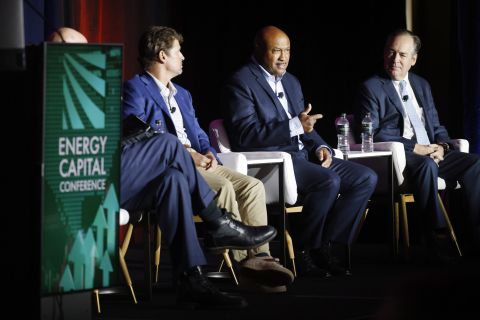Given the high finding and development (F&D) costs now being experienced by E&P companies, one researcher has come up with a new metric to better evaluate the upstream economic performance of the industry and spotlight individual producers positioned to outperform their peers on a return basis.
This metric, return on drilling dollars (RODD), calculates the internal rate of return associated with the cost to bring a new unit of production online and the cash flow that same unit generates over time.
"In 2006, we calculate that E&P companies as a group averaged a 4% RODD-a level clearly lower than the cost of capital for the group, around 10%," says Joseph Allman, E&P analyst for JPMorgan Securities in Houston.
Significantly contributing to this poor industry performance last year was a key component of the RODD metric-proved developed F&D costs. In 2006, those costs rose to $4.03 per thousand cubic feet equivalent from $2.39 the prior year.
In short, producers are generally getting inadequate rates of return because proved developed F&D costs are so high, the analyst says.
Although Allman recommends using net asset value (NAV) as the primary metric for evaluating stocks, he suggests using RODD as a supplementary screening tool. "We would focus on [producers] that are able to capture the highest returns [on drilling dollars] because their costs are low and their reserves are high value, but [their stocks] are still trading below NAV," he says.
"Other opportunities exist in companies that are experiencing a significant improvement in returns not reflected in their current valuation."
Among large-cap producers within his coverage universe, XTO Energy Inc. stands out as the only one that achieved a strong RODD in 2006-15%. "Based on a Nymex pricing assumption of $7.80 gas and $62 oil, we estimate the company's RODD will increase to 25% in 2007."
Allman notes the stock is trading at a 14% discount to NAV. However, "we're likely to hear news that could move the needle somewhat for XTO as it releases more data on its East Texas Cotton Valley horizontal wells, a handful of new Piceance Basin wells in Colorado, and its step-outs in the Barnett, Fayetteville and Woodford shales."
Within the analyst's midcap coverage group, Ultra Petroleum Corp. ranks first in the E&P group in terms of RODD for 2006 (36%) and for 2007 (41%).
"Increased density drilling and deeper drilling at Pinedale/Jonah fields in Wyoming offer Ultra the opportunity to maintain a strong RODD for the foreseeable future."
Allman also cites Gulf Coast producer Denbury Resources Inc. That operator had a 2006 RODD of 16%, which he estimates will rise to 20% this year. "Given oil's premium price relative to natural gas, Denbury's oil-heavy profile helps it achieve superior cash margins and, combined with below-average proved developed F&D costs, superior RODD."
Among small-cap independents, the analyst points out that Mariner Energy Inc. last year achieved an 11% RODD, which is expected to soar to 29% in 2007. He explains that the company's superior cash margins, combined with its high-present-value Gulf of Mexico production, give it above-average returns relative to its peer group.
Recommended Reading
Dividends Declared (Sept. 30 - Oct. 11, 2024)
2024-10-11 - Here is a compilation of dividends and distributions declared from select upstream, midstream and service and supply companies from Sept. 30 to Oct. 11.
Post Oak Backs New Permian Team, But PE Faces Uphill Fundraising Battle
2024-10-11 - As private equity begins the process of recycling inventory, likely to be divested from large-scale mergers, executives acknowledged that raising funds has become increasingly difficult.
Delek Logistics Partners Raises $166MM in Offering to Pay Debt
2024-10-11 - Delek Logisitics Partners closed an offering of 4.42 million common units to generate gross proceeds of $166 million.
Citgo Auction in Jeopardy as Venezuela Bondholders Pursue Parallel Claims
2024-10-11 - The court cases have increased uncertainty over which company is best positioned to take over the seventh-largest U.S. refiner Citgo Petroleum.
Quantum’s VanLoh: New ‘Wave’ of Private Equity Investment Unlikely
2024-10-10 - Private equity titan Wil VanLoh, founder of Quantum Capital Group, shares his perspective on the dearth of oil and gas exploration, family office and private equity funding limitations and where M&A is headed next.




